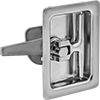Filter by
Latching Distance
Opens With
Mount Type
Cam Latch Type
Through-Hole Diameter
Latch Turn Direction
Finish
Latching Distance Adjustability
Environment
Straight Cam Length
DFARS Specialty Metals
Overall Length
Offset Cam Length
Mounting Screw Size
Cam Type
Building and Machinery Hardware







































